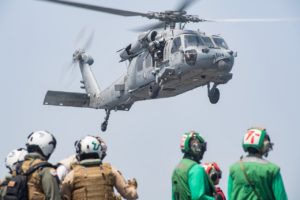
The Navy renewed a $2.3 billion contract for H-60 Seahawk logistics support with Lockheed Martin Rotary Mission Systems [LMT] earlier this month, the Navy said Feb. 15. The award is a UH-60 Seahawk Performance Based Logistics (PBL) contract for Lockheed Martin’s facility in Oswego, N.Y. It represents Naval Supply Systems Command’s (NAVSUP) Weapons Systems Support’s (WSS) fourth PBL contract with Lockheed Martin since 2004. The contract provides supply support for the MH-60R/S Seahawk helicopter platforms, covering nearly 1,000 individual items…

 By
By 











